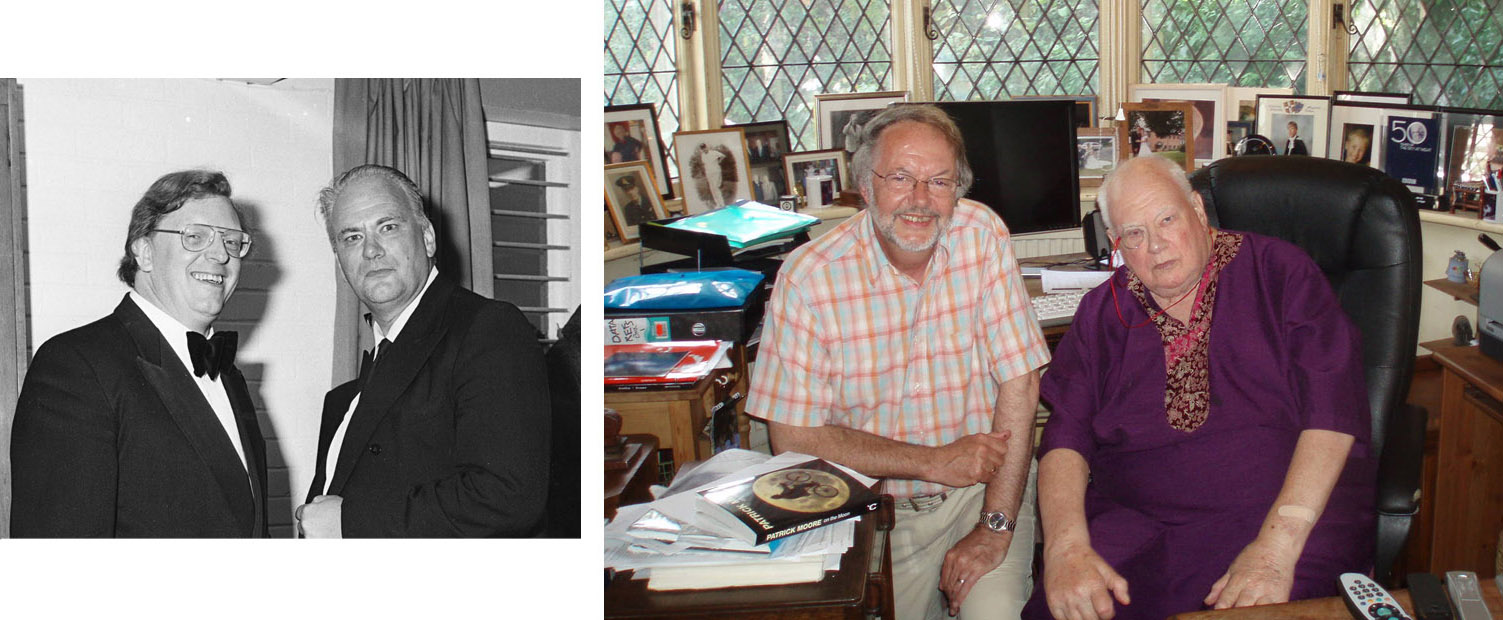Difference between revisions of "December 10, 2012"
| Line 27: | Line 27: | ||
<br /> | <br /> | ||
<hr /> | <hr /> | ||
| + | <!-- Removed reference to store page --> | ||
| + | </div> | ||
| + | ---- | ||
| + | ===COMMENTS?=== | ||
| + | Register, and click on the <b>Discussion</b> tab at the top of the page. | ||
| + | <hr> | ||
| + | You can support LPOD when you buy any book from Amazon thru [[Support_ LPOD|LPOD]]! | ||
| + | <span style="font-size:88%"> | ||
| + | <center> | ||
| + | Contributions to http://www2.lpod.org/ are licensed under a Creative Commons Attribution No-Derivative-Works Non-Commercial 3.0 License. [http://www.creativecommons.org/licenses/by-nc-nd/3.0 http://www.wikispaces.com/i/creativecommons/by-nc-nd_3.0_80x15.png]<br> | ||
| + | </center> | ||
| + | </span> | ||
Revision as of 20:16, 31 January 2015
Sir Patrick, R.I.P.

Patrick Moore with BAA Lunar Section president Ron Maddison in 1975, and recently with current Lunar Section and BAA president Bill Leatherbarrow. Images provided by Bill Leatherbarrow, Sheffield, England
In the early 1960s I got my first Patrick Moore book about the Moon, A Guide to the Moon. His books and the
more than 50 year run of his TV program The Sky at Night must have attracted millions of normal folks and
future PhDs to astronomy and especially the Moon. But in the 60s in America I quickly got immersed with
professional lunar scientists, including Dai Arthur and Ewen Whitaker, who had been associated with Moore
through the British Astronomical Association. Those preparing for Apollo forgot Moore, partly because he
championed volcanism as the origin of lunar craters, and because a new more quantitative and less obser-
vational approach was required. But a few decades later I realized that the Moon provided more than data, it
was a magical world available to be personally explored by all, not just astronauts. And Moore was still there,
still writing books about the Moon and enchanting new generations. Over time I collected five more of Moore's
Moon books, and at the 2011 Astrofest I finally had a chance to be introduced to him. Patrick Moore was not
a scientist, he had a much bigger impact by inspiring generations of people to enjoy and appreciate the sky
at night.
Chuck Wood
Note: It would be natural for a lunar crater to be named for Sir Patrick, but there is already a Moore on the
Moon, so perhaps in three years, the waiting period for naming a feature following death, there may be an
opportunity to add Patrick Moore as a second person commemorated by the name.
Related Links
BAA announcement
COMMENTS?
Register, and click on the Discussion tab at the top of the page.
You can support LPOD when you buy any book from Amazon thru LPOD!
Contributions to http://www2.lpod.org/ are licensed under a Creative Commons Attribution No-Derivative-Works Non-Commercial 3.0 License. 



